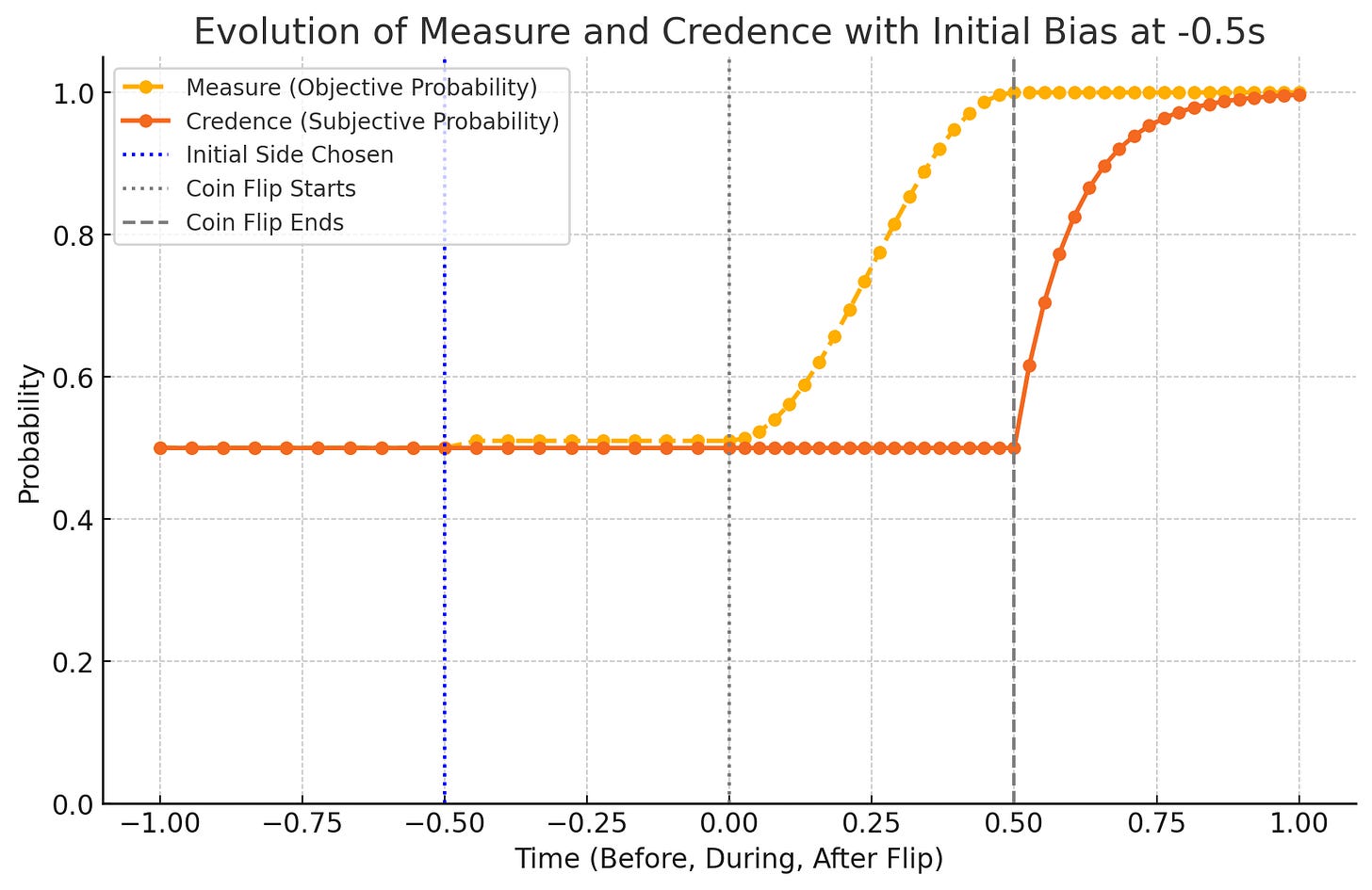Heads or Tails
How Measure and Credence Evolve in a Coin Flip
When considering probabilities, especially within a framework like the Quantum Branching Universe (QBU), it's essential to distinguish clearly between two concepts: Measure (objective probability) and Credence (subjective probability).
Setting the Stage
Initially, we have a perfectly symmetrical situation: a fair coin with two equally likely outcomes, heads or tails. At this stage (before -0.5 seconds in our scenario), the Measure—representing the objective probability—is precisely 0.5, reflecting perfect symmetry and a balanced scenario.
Introducing a Bias
At exactly -0.5 seconds before the flip begins, we select the initial upward-facing side of the coin. This seemingly trivial choice breaks the symmetry. Empirical evidence indicates that the side facing upward before flipping is slightly more likely to end up facing upward after the flip—typically around 51% rather than exactly 50%.
Thus, at the moment of side selection (-0.5s), Measure abruptly shifts slightly from 0.5 to 0.51.
During the Flip
Once the flip commences at 0 seconds, Measure doesn't abruptly change; instead, it evolves smoothly. The deterministic physics governing the coin's trajectory causes Measure to steadily increase from the initial slight bias of 0.51 to eventual certainty (1.0) as the coin's fate becomes progressively locked-in.
Credence: The Subjective Perspective
While Measure evolves objectively, Credence—the subjective probability ascribed by an observer—remains unchanged at 0.5 throughout this entire process. Unless the observer gains additional information (e.g., viewing the coin’s orientation mid-air), their Credence does not adjust until after the coin lands. Once the coin settles, the observer quickly updates their Credence to align with the outcome.
Summary of Key Moments:
Before -0.5s: Measure and Credence both at 0.5.
At -0.5s (initial side chosen): Measure shifts slightly to ~0.51, Credence remains 0.5.
During Flip (0s to 0.5s): Measure smoothly evolves from 0.51 to 1.0. Credence remains constant.
After Coin Lands (>0.5s): Measure at 1.0; Credence rapidly updates to 1.0 upon observation.
Visualizing the Process
A carefully constructed visualization clearly illustrates these dynamics, capturing the critical distinctions between Measure's smooth evolution and Credence's abrupt, evidence-based adjustments.
Understanding this nuanced distinction between objective and subjective probabilities not only clarifies our reasoning about common scenarios like coin flips but also provides deeper insight into decision-making under uncertainty within complex frameworks such as the Quantum Branching Universe (QBU).



